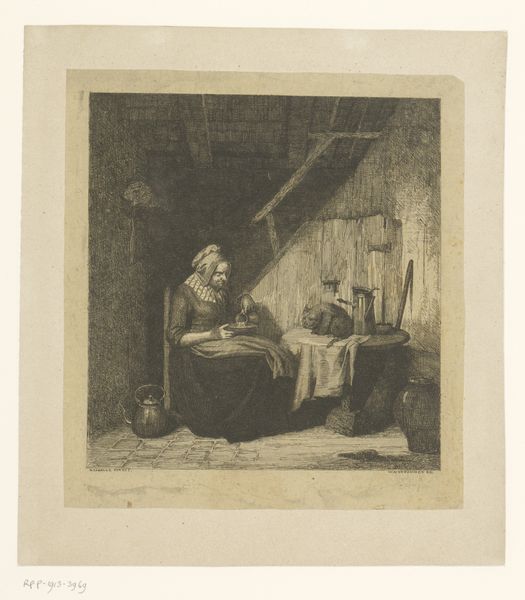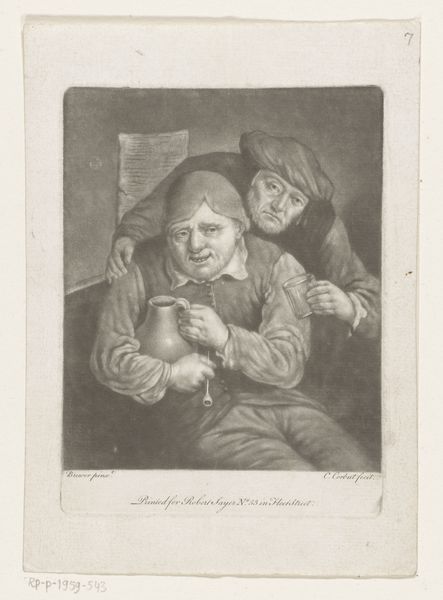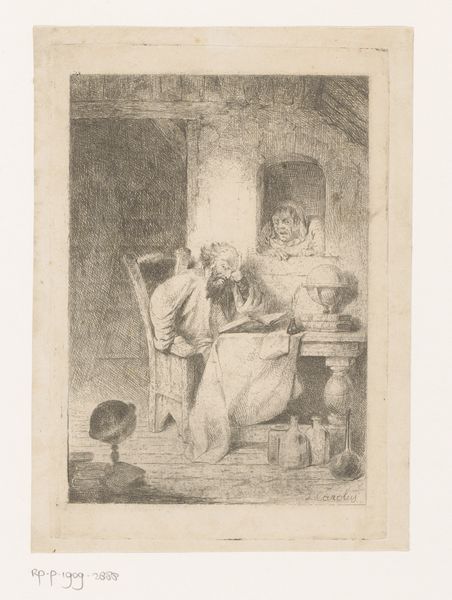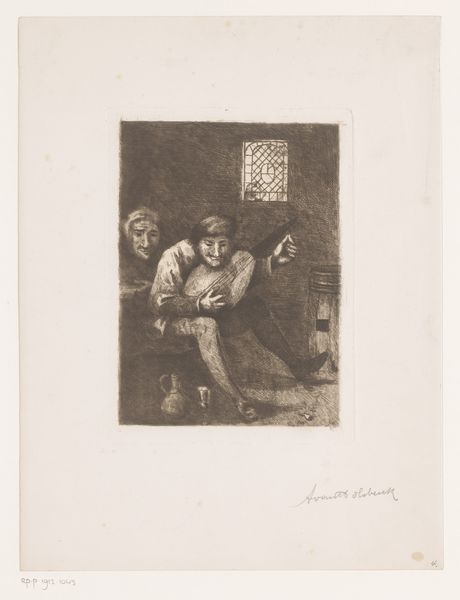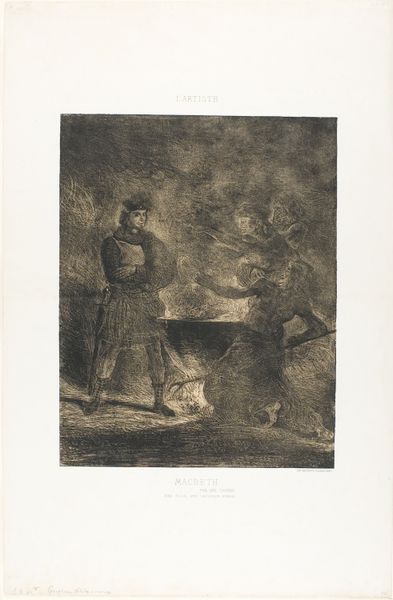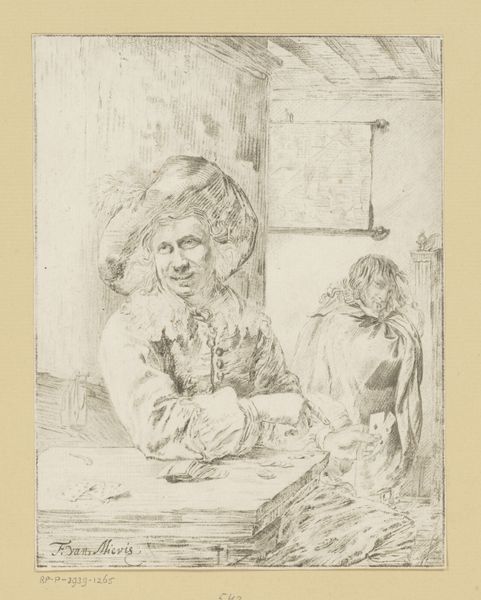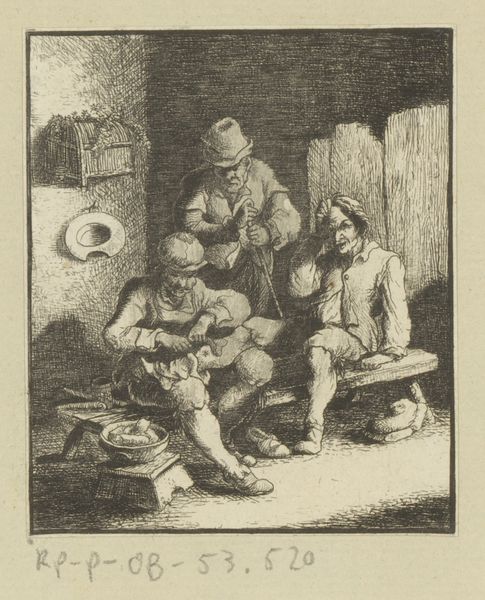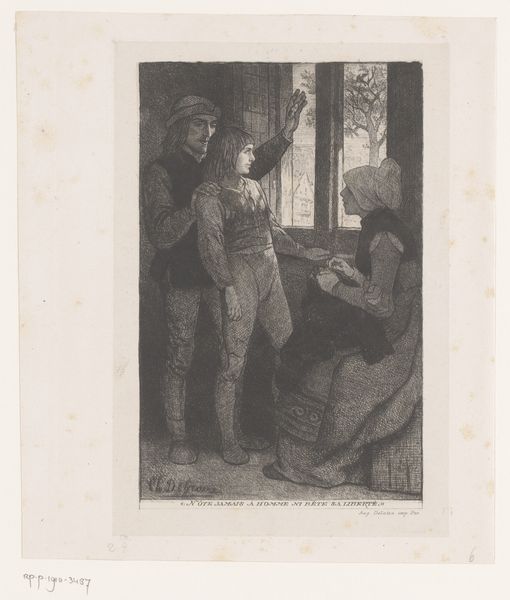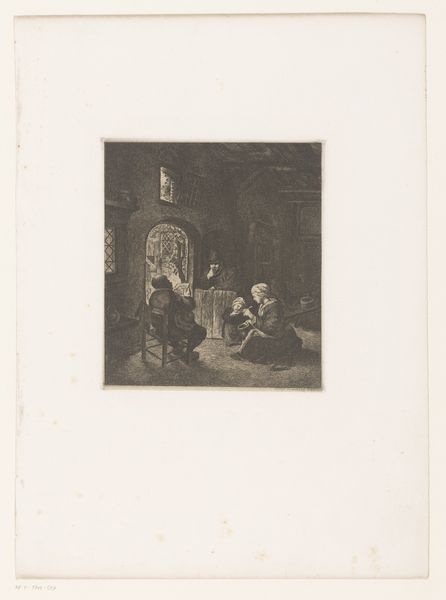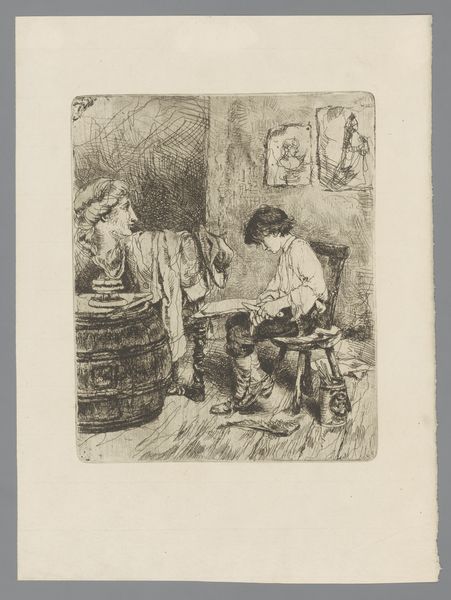
print, etching, paper
# print
#
etching
#
landscape
#
figuration
#
paper
#
genre-painting
Dimensions: height 198 mm, width 148 mm
Copyright: Rijks Museum: Open Domain
Editor: This is "Luitspeler stemt zijn instrument," or "Lute Player Tuning His Instrument," an etching made by Albert Van Holsbeeck between 1887 and 1912. The texture seems so rich for a print; I’m curious about what we can unpack regarding the context around it. What can you tell me about this artwork? Curator: I see an etching, fundamentally a *reproducible* artwork, depicting leisure – the production of music, perhaps even performance for an audience implied by the second figure. It draws attention to how such leisure activities become accessible and disseminated. We must consider the socioeconomic implications: Who produced this etching, and for what market? Editor: That's interesting. So, rather than focusing on the scene itself, you’re drawn to the way the image was made and how that might have impacted its availability? Curator: Exactly! The means of production—the etching process, the paper quality—speak to its potential reach and target audience. Was this meant for the masses or a select, affluent group? Furthermore, consider the materials used. The etcher's labor in producing multiple impressions invites us to analyze the art market dynamics of that time. Editor: You’ve made me think about it from a totally different angle, less about who is depicted and more about who this print was for and how it circulated! Thanks! Curator: Indeed! Reflecting on the interplay between art production, materials, and the cultural economy unveils hidden narratives within this seemingly simple genre scene.
Comments
No comments
Be the first to comment and join the conversation on the ultimate creative platform.
